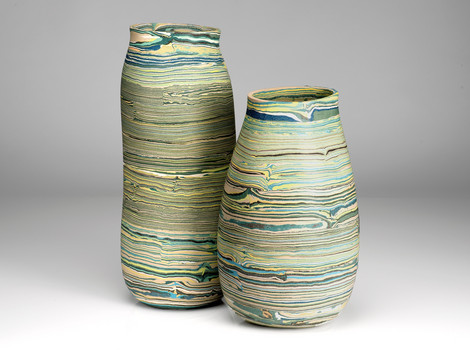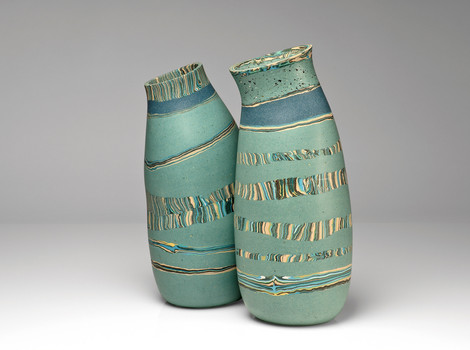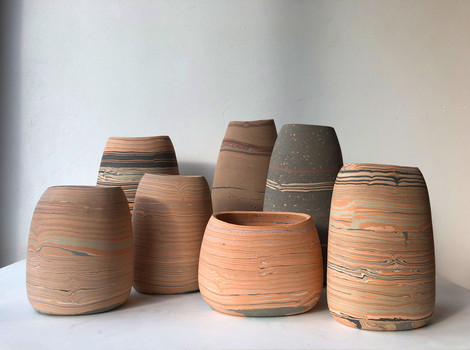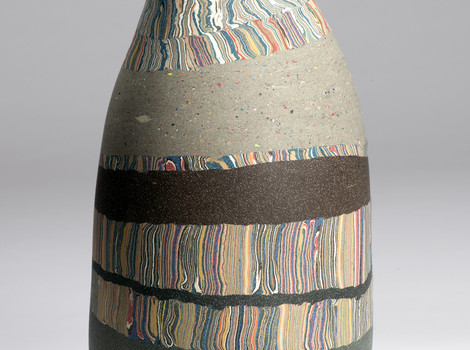The most common term is Neriage. It is a method where ceramic bodies of different colours are thrown together on the potter’s wheel. Not only the effects are interesting, but also this marbling is both in the interior and exterior of the vessel or object equal.
For this purpose one chooses a body as light as possible which is stained with the corresponding body stains. These are placed next to each other in the desired colour gradient and twisted on the potter’s wheel.
Another option is to use bodies of different colours which contain almost the same chamotte quantity and grain size and have similar firing shrinkage and CTE to process these natural shades with each other. Goerg & Schneider has colours in black/anthracite, red, yellow, salmon and white which can be combined with each other.
Nerikomi is a hand-building technique, a Mosaic technique for porcelain vessels. In this case the structure should be equally visible inside and outside. It is difficult to throw porcelain and therefore multi-coloured strings are combined to ornaments or rolled to patterns which are then cut into individual elements at 90 ° to the rolling direction. With the Nerikomi technique, these elements are placed on a non-ceramic ground (e.g. a plaster mould) and garnished to one another. After drying, the surfaces (inside and outside) are polished with sandpaper and steel wool. The colours and lines are shown to particular advantage.
This is easily possible because the different coloured bodies are made of the same basis (often porcelain, or very light stoneware) and therefore they have almost the same characteristics.
This method is very time-consuming. However, the result is amazing and it is worth doing it.
Try it!
Here are some examples of these techniques:







